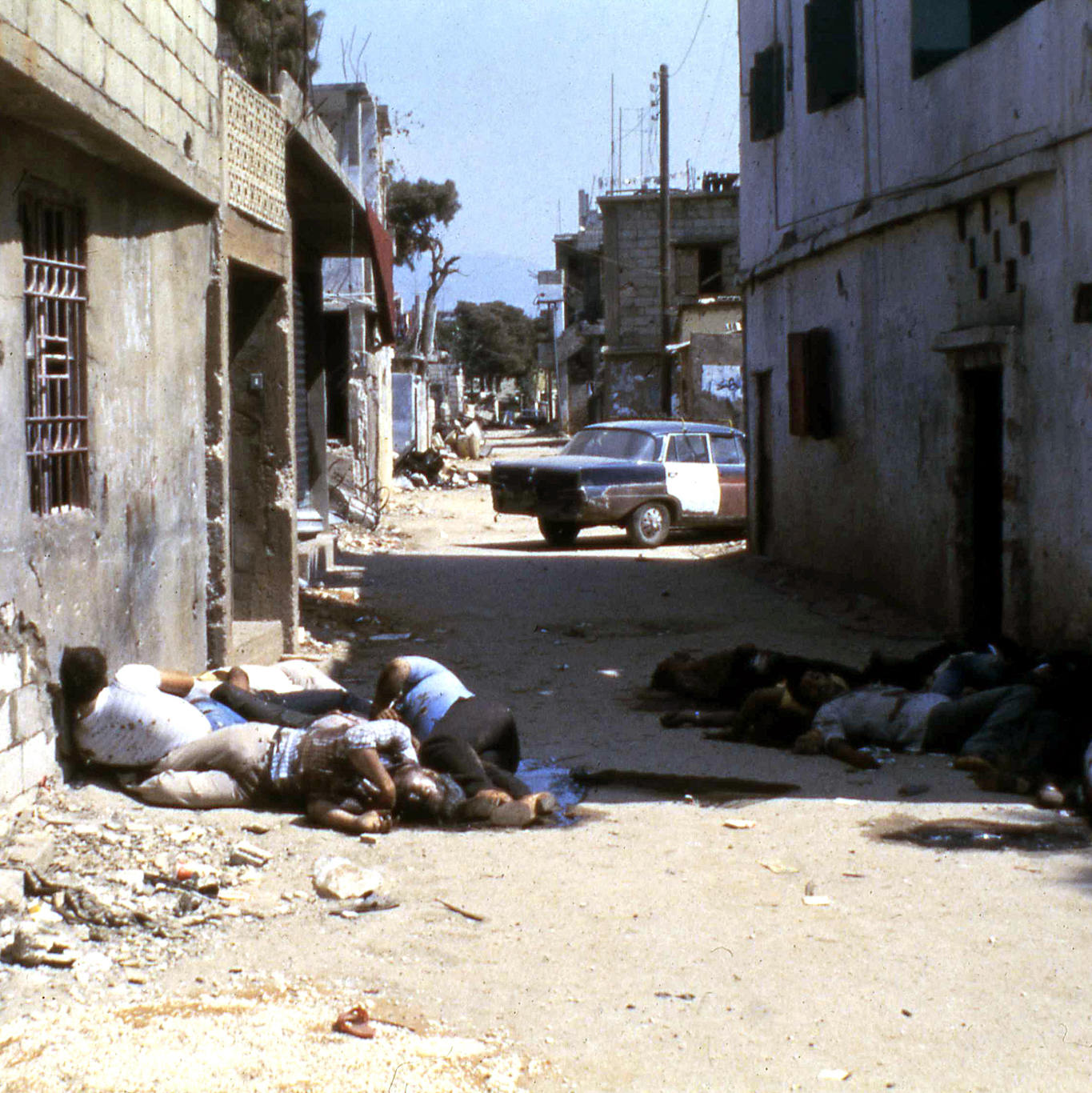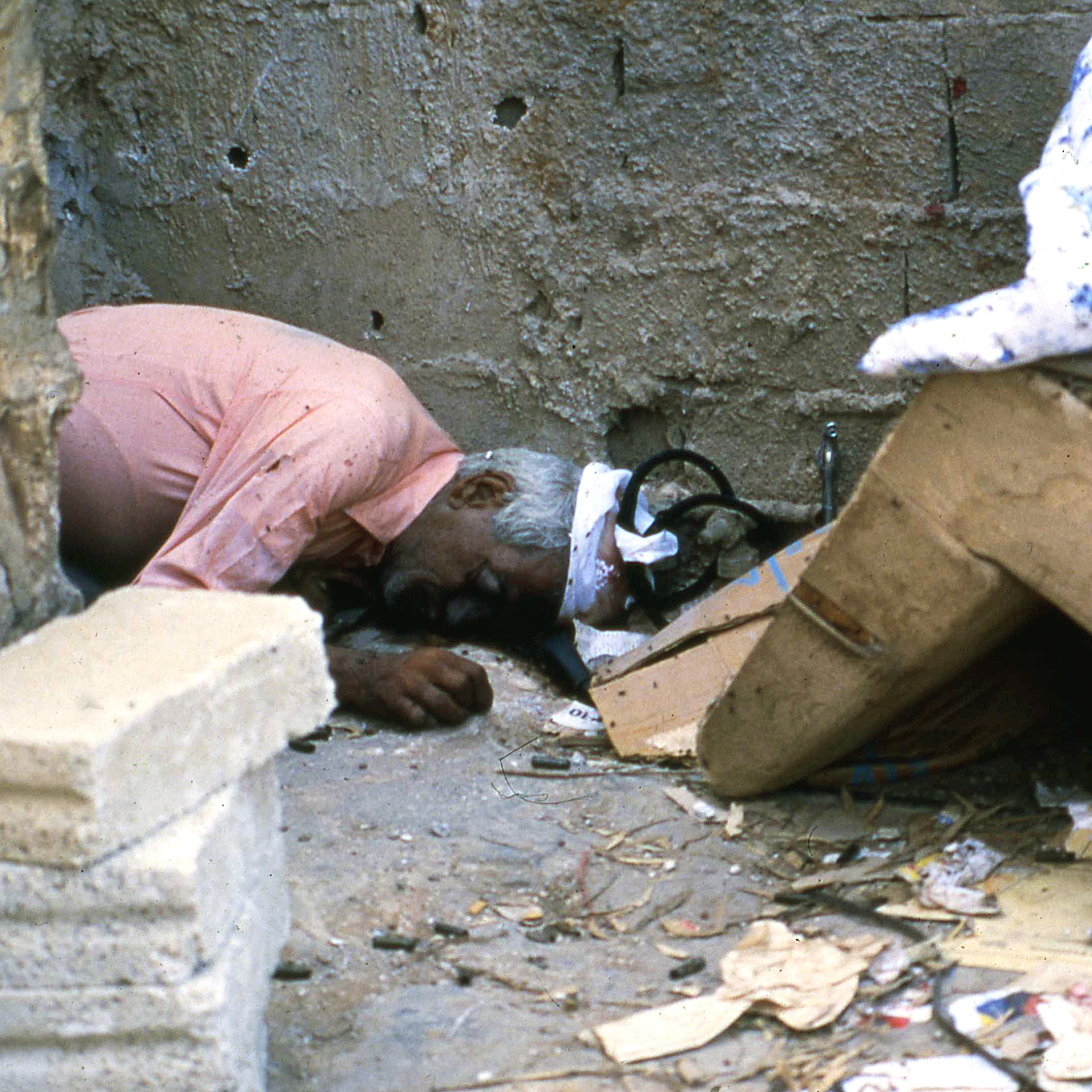Posted by: John Phoenix

ISRAEL’S LICENSE TO KILL: UNRAVELING THE SABRA AND SHATILA MASSACRE
Miko Peled, who was serving in the Israeli military at the time, examines the events leading up to the infamous Sabra and Shatila massacre and questions why the world turned a blind eye to the signs of impending tragedy.
The Sabra and Shatila massacre was no accident. Nor should it have come as a surprise to anyone. It had to have been well planned in advance and demanded a great deal of cooperation between the forces involved.
The logistics had to have been worked out first. Closure of the camps, providing supplies and ammunition for the murderers, plans where to dig the mass graves for thousands of bodies, trucks and bulldozers needed to carry the bodies and dig the graves, the flares to light up the skies at night had to be coordinated with the military so that the murders are not interrupted by darkness. Manpower had to be allocated, and the political consequences needed to be considered.
This list is not exhaustive, but it gives us an idea of the careful planning that likely took place and, in turn, required time. It also shows that a very large number of people had to be in on this plan, yet it was never revealed.
From Glorious Millennia to Death and Destruction: Zionists Rewrite Palestine’s Story
The Zionist narrative is arguably responsible for the welcoming and forgiving attitude the entire world has towards the horrendous, unforgivable crimes committed by Israel since its founding in 1948.
MintPress News·Miko Peled·18 Sept
https://iframely.net/EmesBkF?card=small&v=1&app=1
The Israeli invasion of Lebanon began in June of 1982, and in no time, the Israeli forces were on the outskirts of Beirut. This means there were more than three months to coordinate between the forces to plan the massacre.
I was still in the midst of my mandatory military service at the time. I was home on leave that day, and I recall being called to return to the base. My role was completely non-combative. I taught first aid to medics in a base near Tel Aviv, and I found it strange that I was called in on a Saturday night.
The official day of the beginning of the invasion was Sunday, June 6, but I recall being called to return on Saturday night. You could tell just by driving along the highways between Jerusalem, where I lived, to the base where I served and which was located just south of Tel-Aviv, that something was going on. I remember seeing tanks being sent north and thinking that was never a good sign.
IT WAS INEVITABLE
By 1982, Israel had been responsible for countless atrocities in which Palestinian men, women, children, the elderly, medical workers, journalists, writers, poets, clergy and political leaders were massacred or assassinated in their beds. So how was this massacre not foreseen, especially when all the signs were there?
The timeline of the buildup to the massacre in the Sabra and Shatila camps was presented in an Aljazeera report from 2022. In June 1982, Israel invaded Lebanon. While the declared objective was to defend the Galilee from attacks from southern Lebanon, its aim was to destroy the Palestine Liberation Organization (PLO).

The PLO withdrew from Lebanon by September 1, 1982. Assurances were provided by the United States and a multi-national force that the remaining Palestinian refugees and civilians would be protected. Once again, the world stood idle as Israel slaughtered Palestinians and Lebanese.
Then, the leadership of the PLO and the Palestinian fighting forces were given no choice but to leave Lebanon and sail to Tunis. The assurances by the United States regarding the safety of the Palestinians who remained without any protection were useless, unenforceable and disingenuous.
Two weeks after the PLO leadership and fighters departed, the Israeli military closed off the Sabra and Shatila refugee camps. It provided cover for the Phalange, a right-wing Lebanese militia who were allies of Israel, allowing them to carry out the mass killings. Israeli commanders on the ground saw what was happening; they saw mass graves being dug, and they notified the chain of command all the way to the Minister of Defense, Ariel Sharon. Sharon was, of course, in on the planning and said that Israel should not trouble itself by intervening when “Arabs kill Arabs.”
A LICENSE TO KILL
The agreement under which the PLO left Lebanon was published in the New York Times on August 21, 1982. It is a pretty straightforward document. The clause dealing with guarantees for the safety of Palestinian civilians being left behind should have raised a red flag. It reads as follows:
Law-abiding Palestinian noncombatants left behind in Beirut, including the families of those who have departed, will be subject to Lebanese laws and regulations. The Governments of Lebanon (GOL) and the United States (US) will provide appropriate guarantees of safety in the following ways:
∗ The Lebanese Government will provide its guarantees on the basis of having secured assurances from armed groups with which it has been in touch.
∗ The United States will provide its guarantees on the basis of assurances received from the Government of Israel (GOI) and from the leadership of certain Lebanese groups with which it has been in touch.

In other words, the safety of the Palestinians in Lebanon was guaranteed by two governments, the Lebanese and the American. The guarantees were based on assurances given by parties that these governments do not control. The Lebanese government had no control over the armed groups within the country, and the United States government had no control over Israel. This, in effect, means that the guarantees were not given by the parties who were the most likely to attack the Palestinians – Israel and the armed groups within Lebanon – and so they were not bound by the agreement.
I asked my friend journalist Charles Glass, who has written extensively about Lebanon, about the Sabra and Shatila massacre. This was his response:
A Palestinian friend of mine, who grew up in Ain el Helwe refugee camp near Sidon, told me that summer that the Christian militias would begin massacres as soon as the commandos left. He said they were cowards who would kill people once their protection was gone. I saw it happen in Tel el Zaatar camp in 1976 when Arafat pulled the commandos out. Many such precedents. The Sabra-Shatila massacre was anything but a surprise.”
In 1982, the Palestinians in Lebanon were left with no one to defend them or even guarantee their safety. Just as they are today, just as they have been since 1948, Palestinians are left alone and unable to protect themselves while Israel is given a license to kill.
Feature photo | Palestinian residents in the Sabra Refugee Camp in Beirut, Lebanon, on Sept. 27, 1982, walking in procession to attend a service to mourn those slain in the massacre. Photo | AP
Miko Peled is MintPress News contributing writer, published author and human rights activist born in Jerusalem. His latest books are”The General’s Son. Journey of an Israeli in Palestine,” and “Injustice, the Story of the Holy Land Foundation Five



